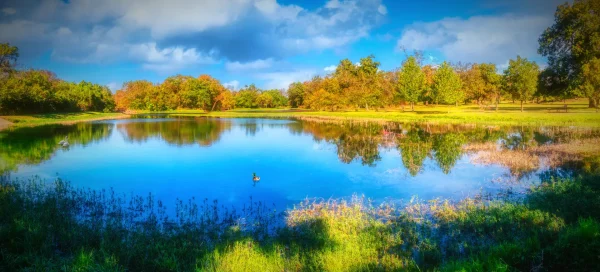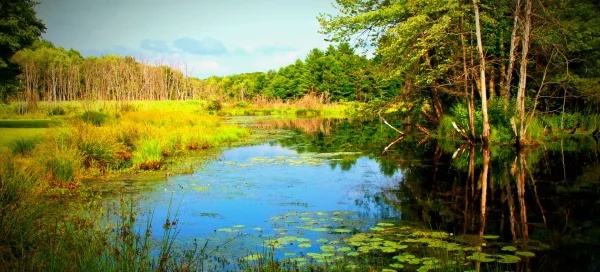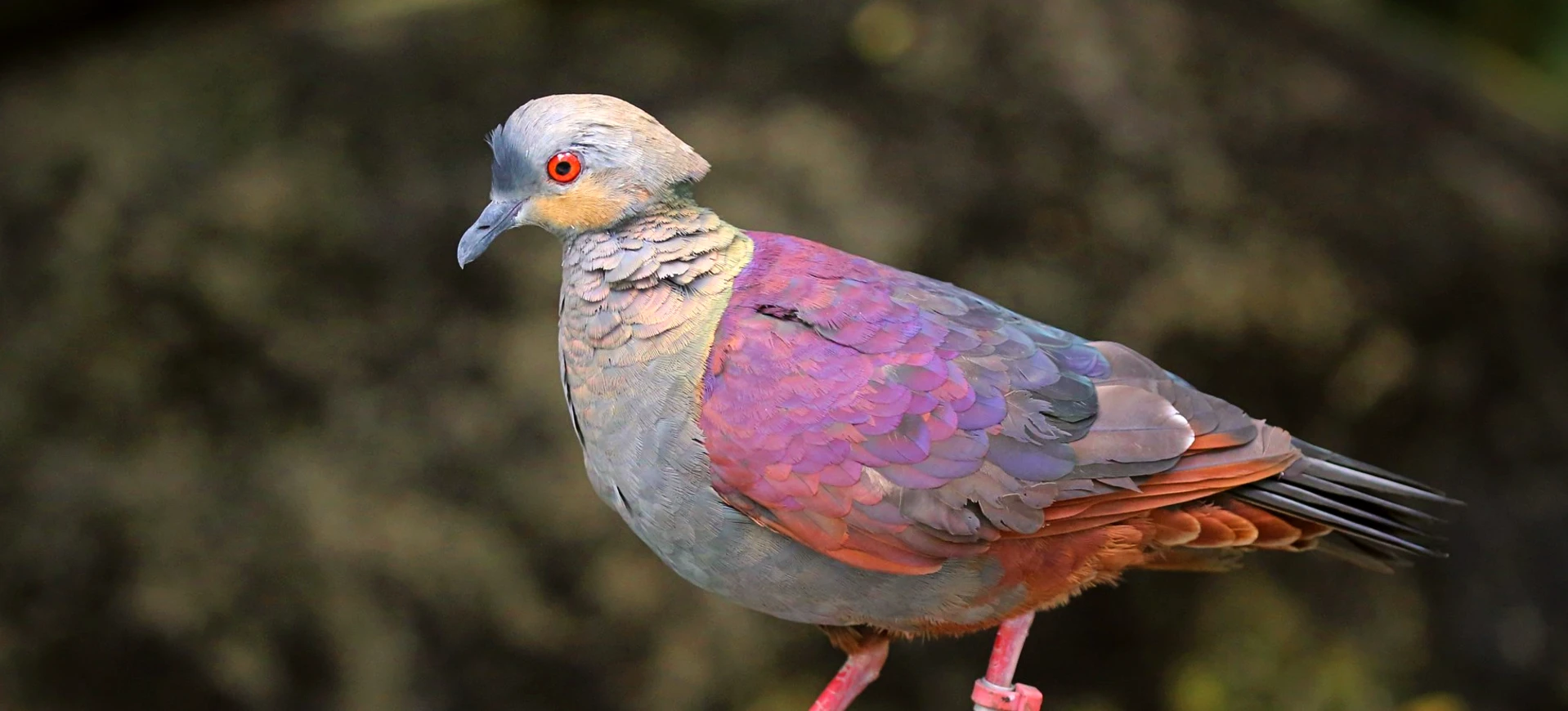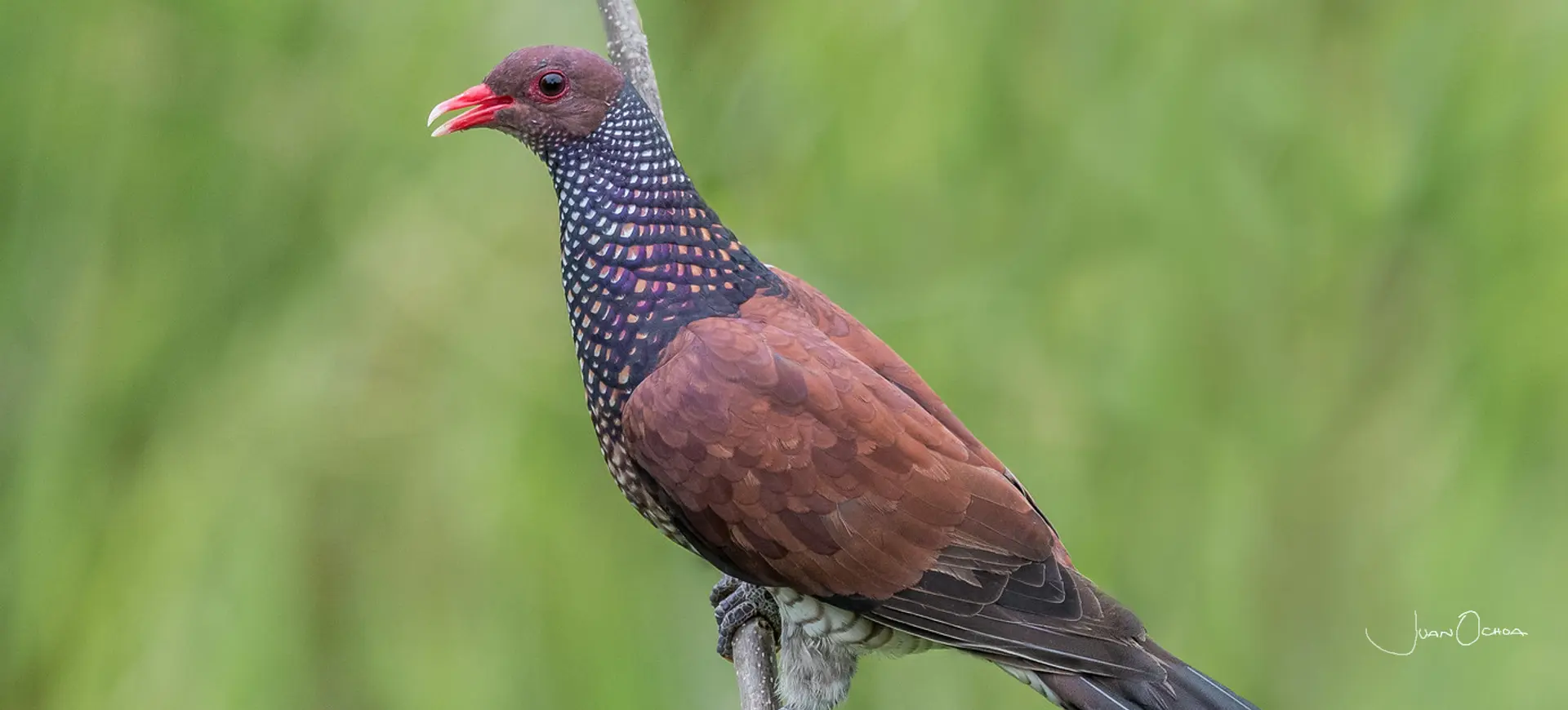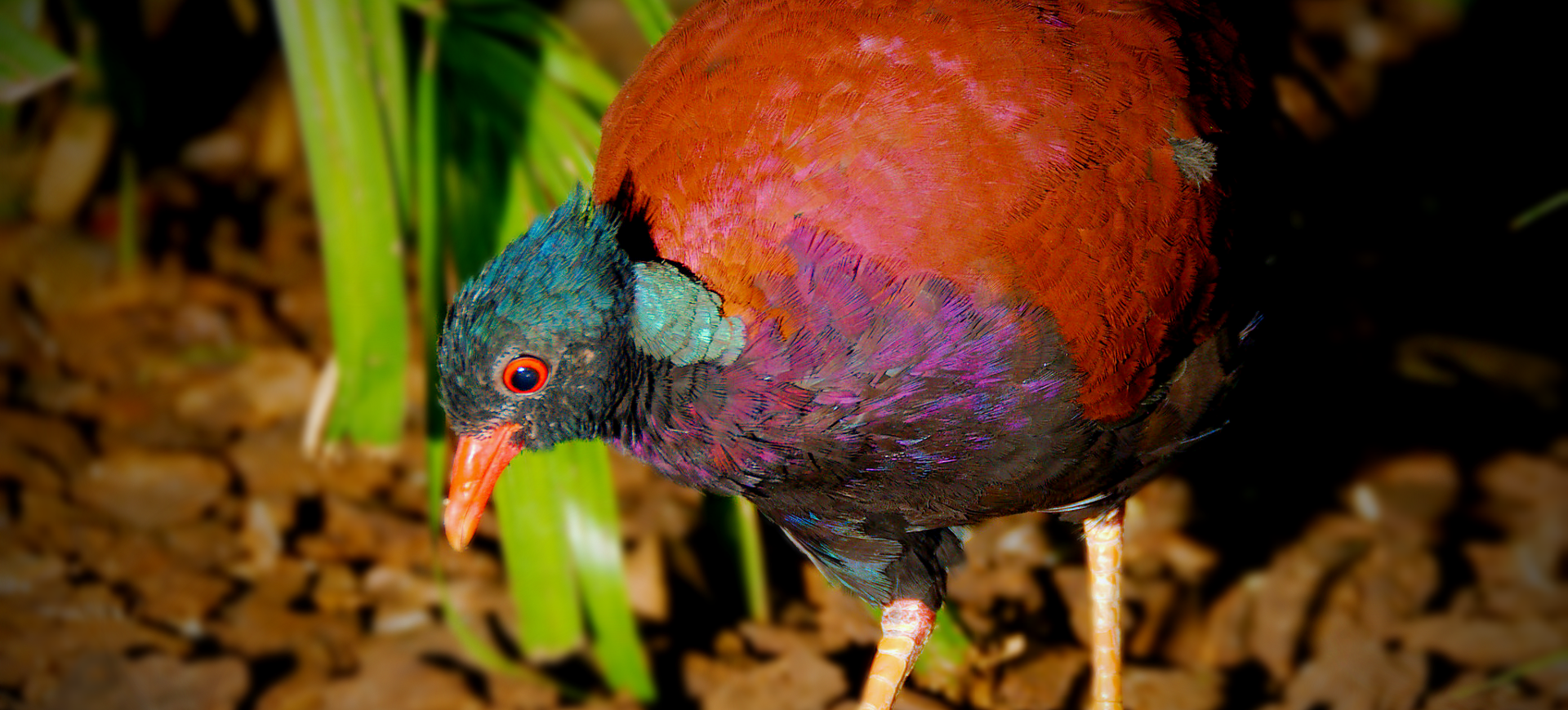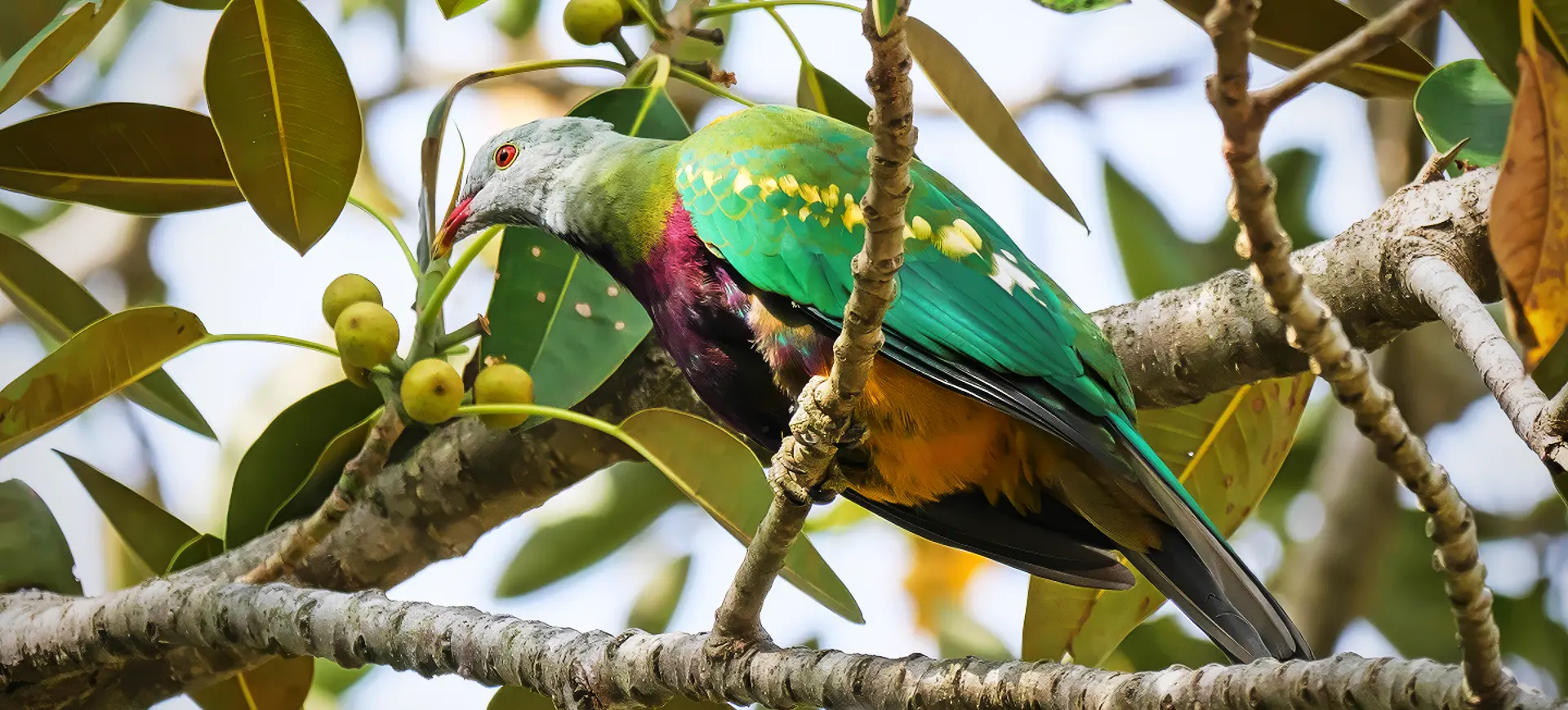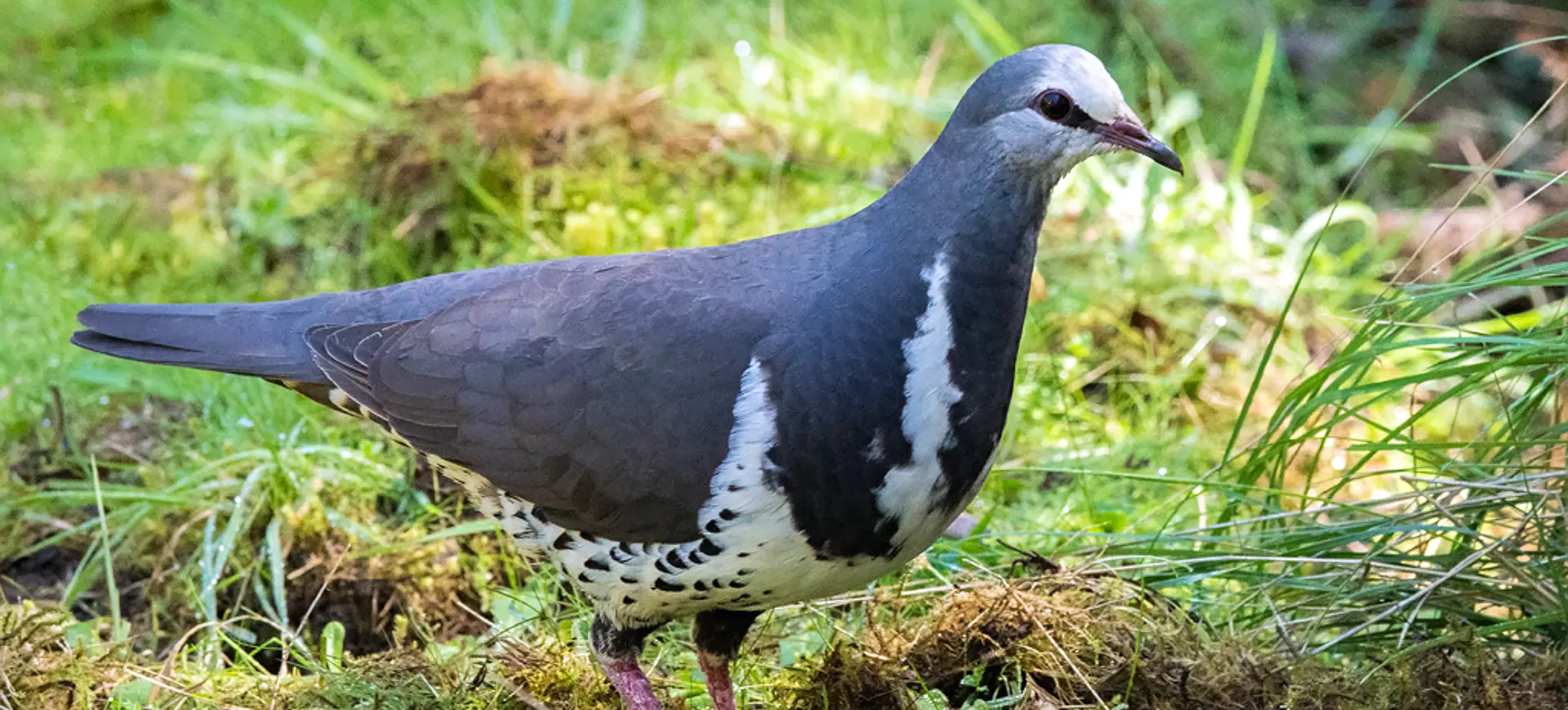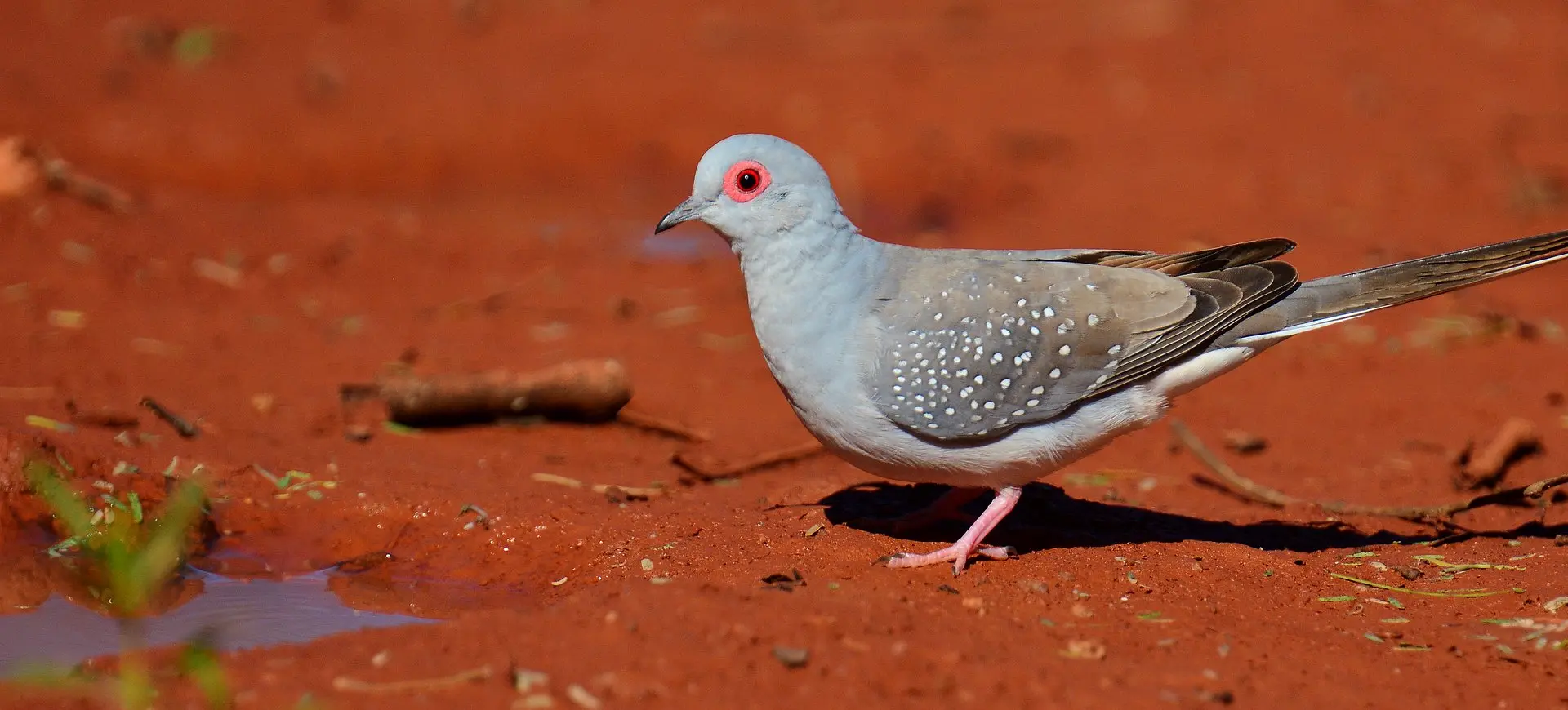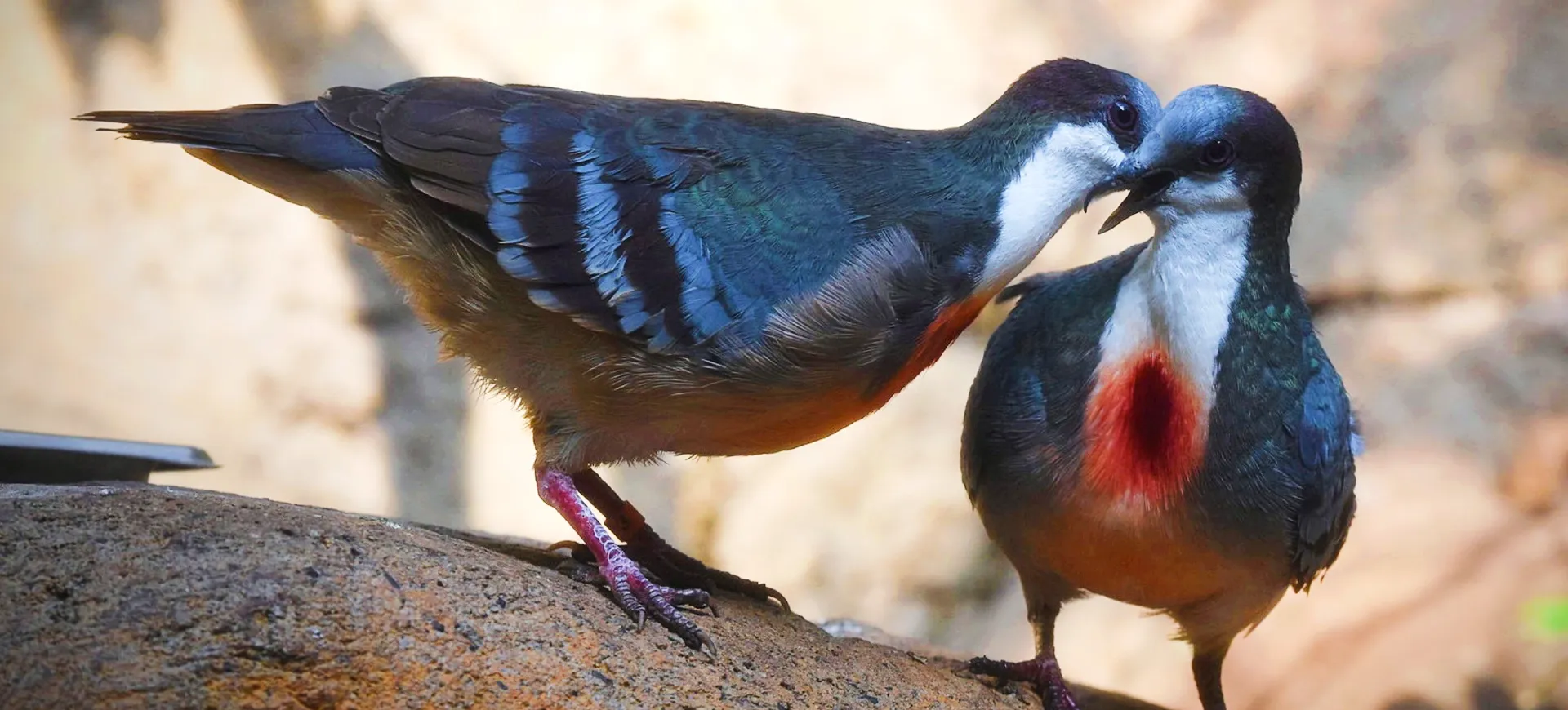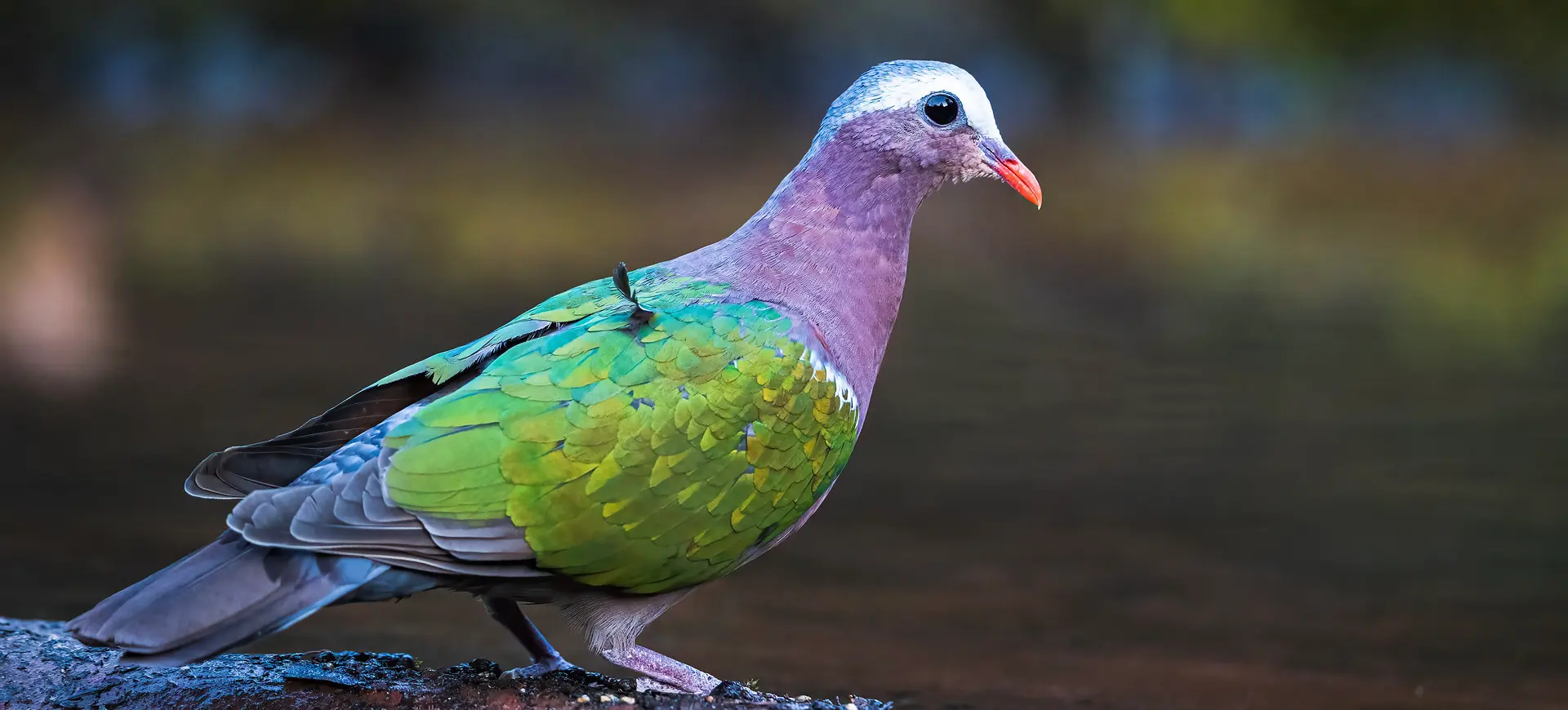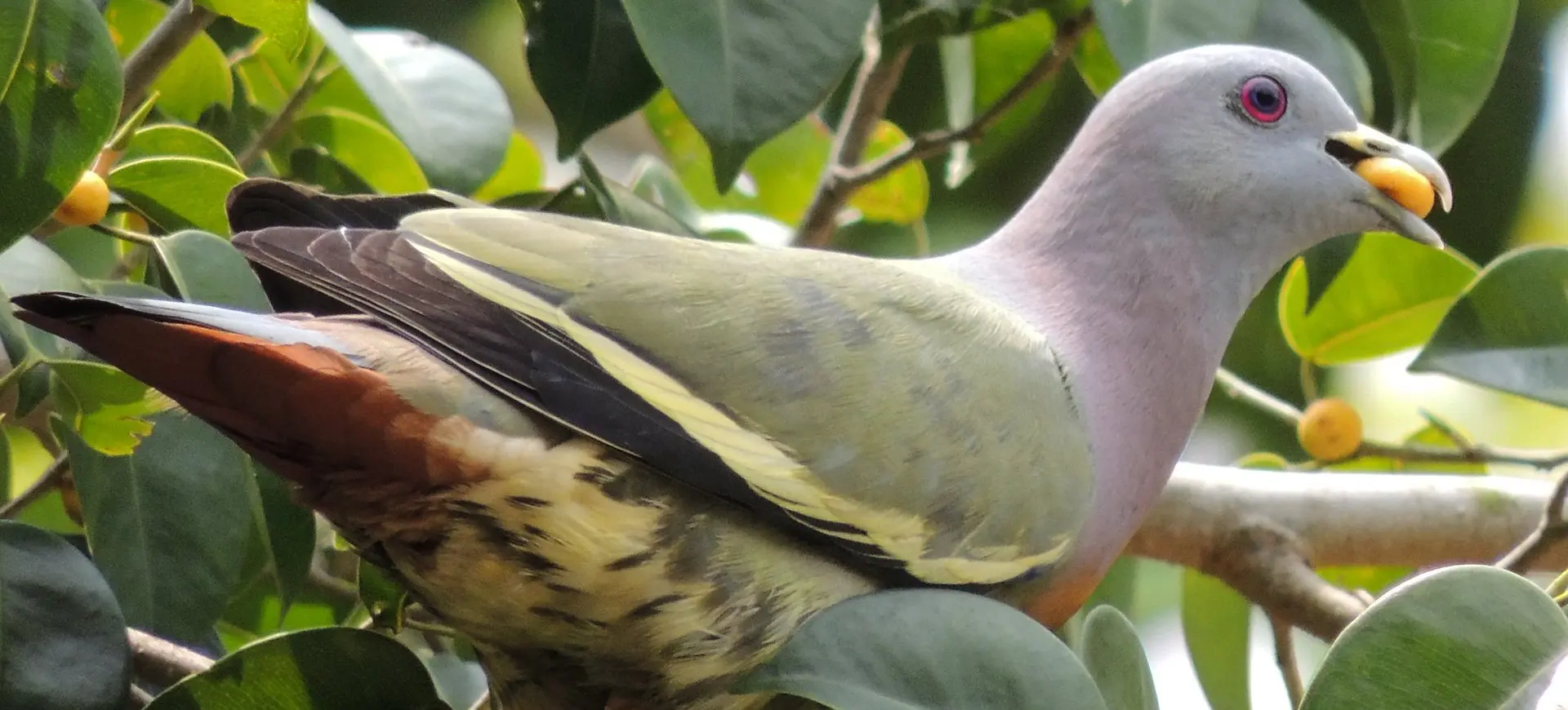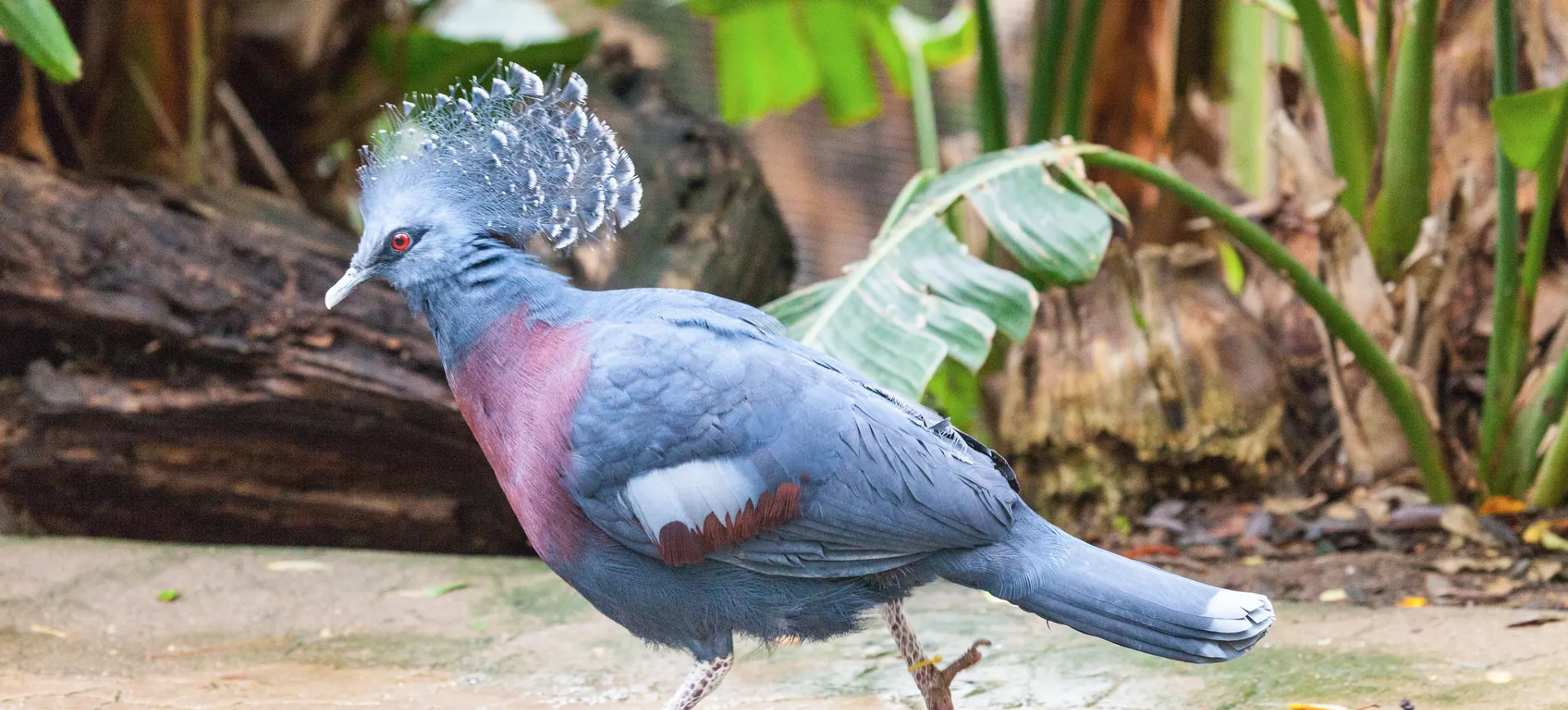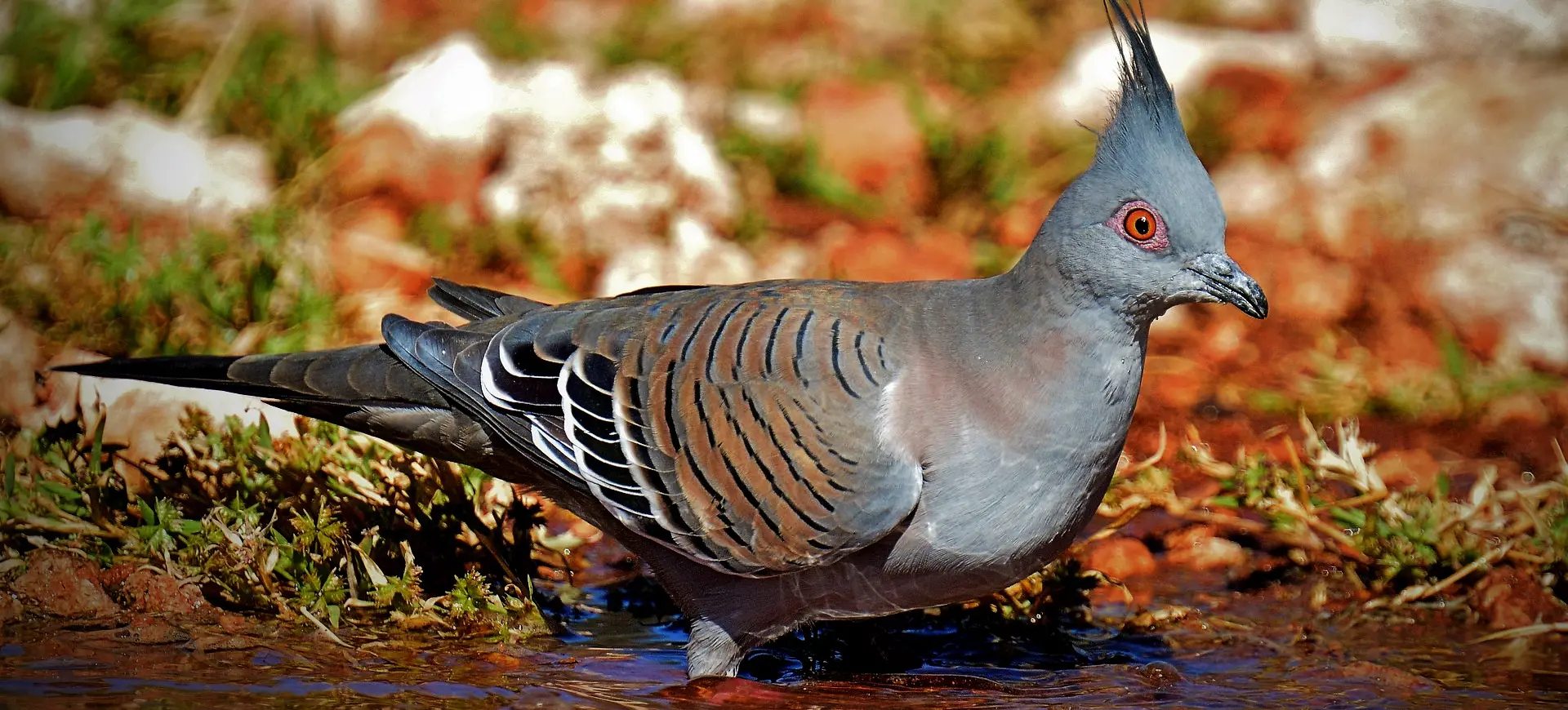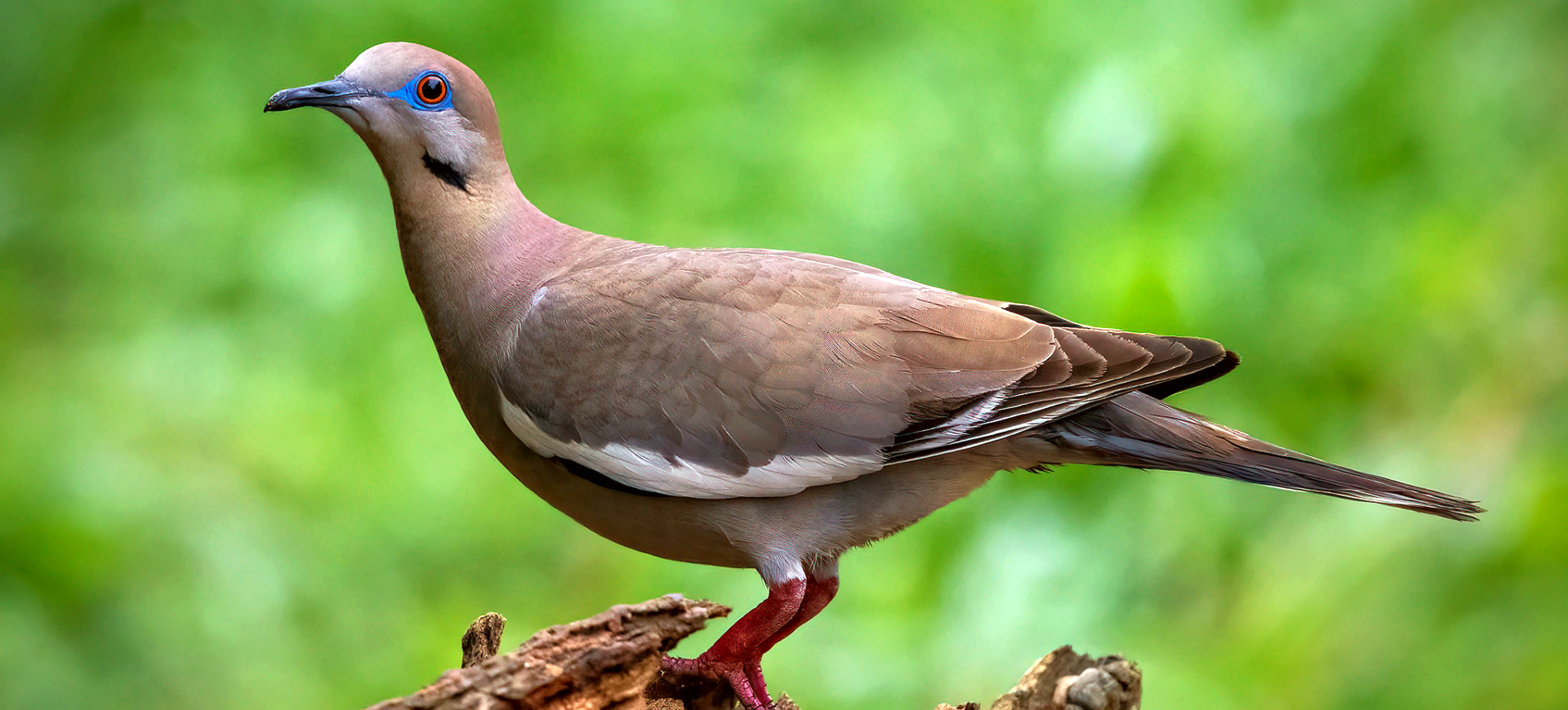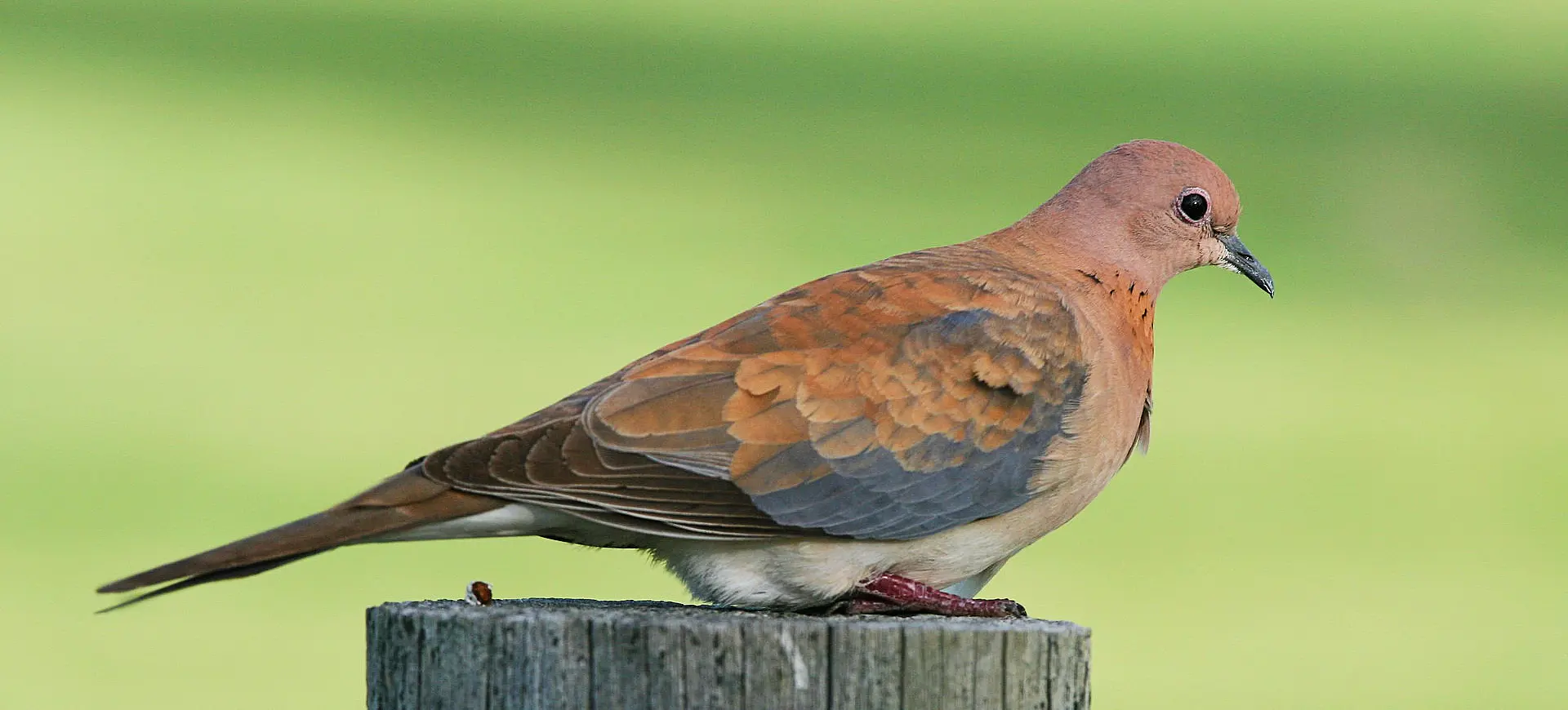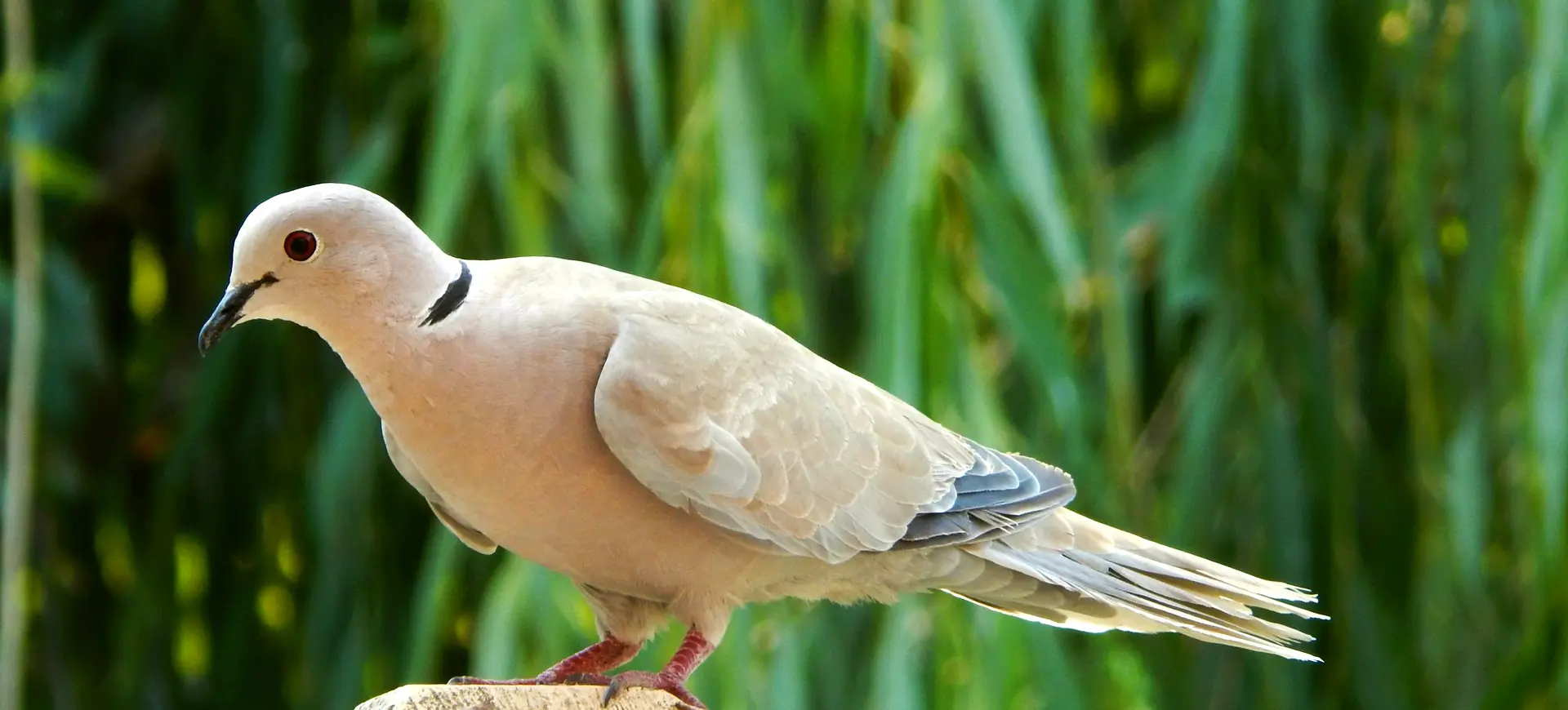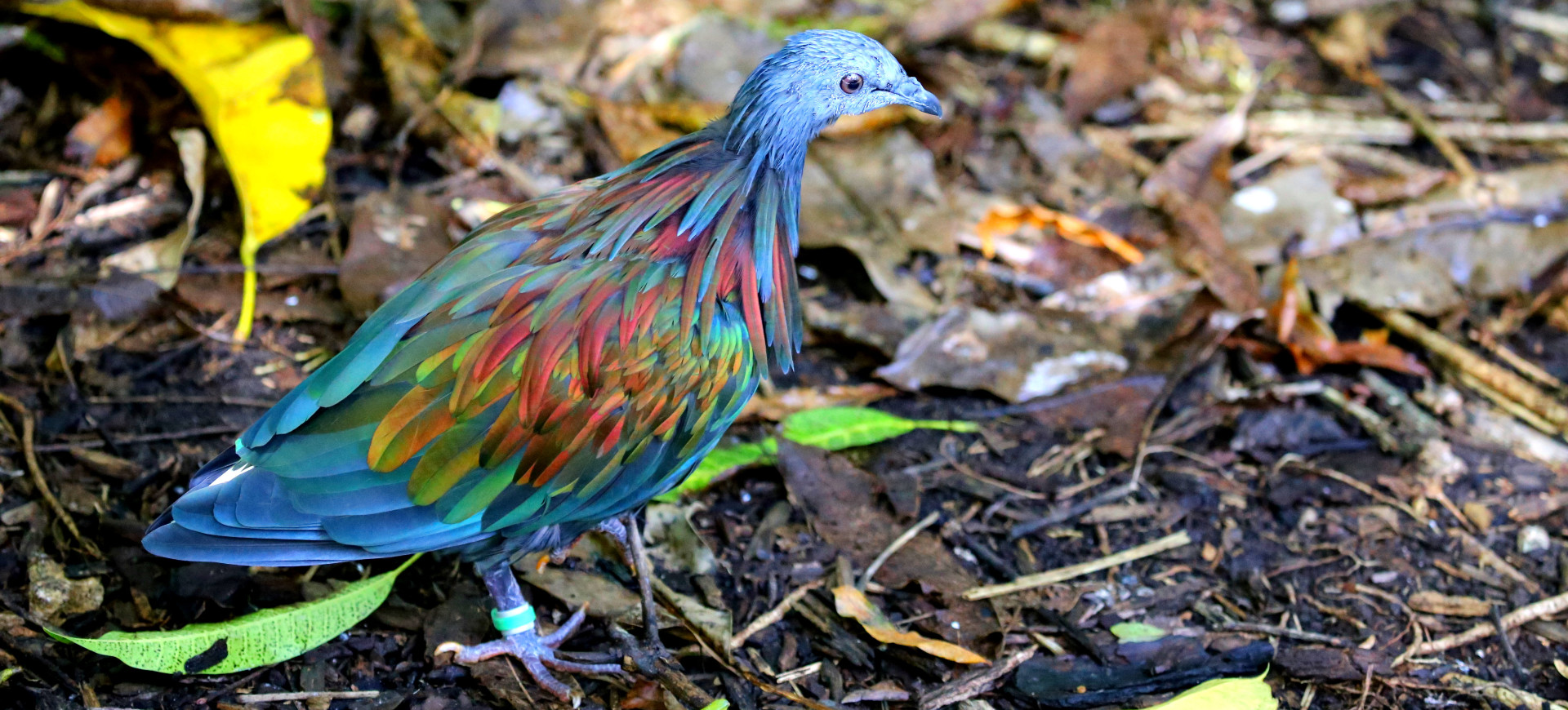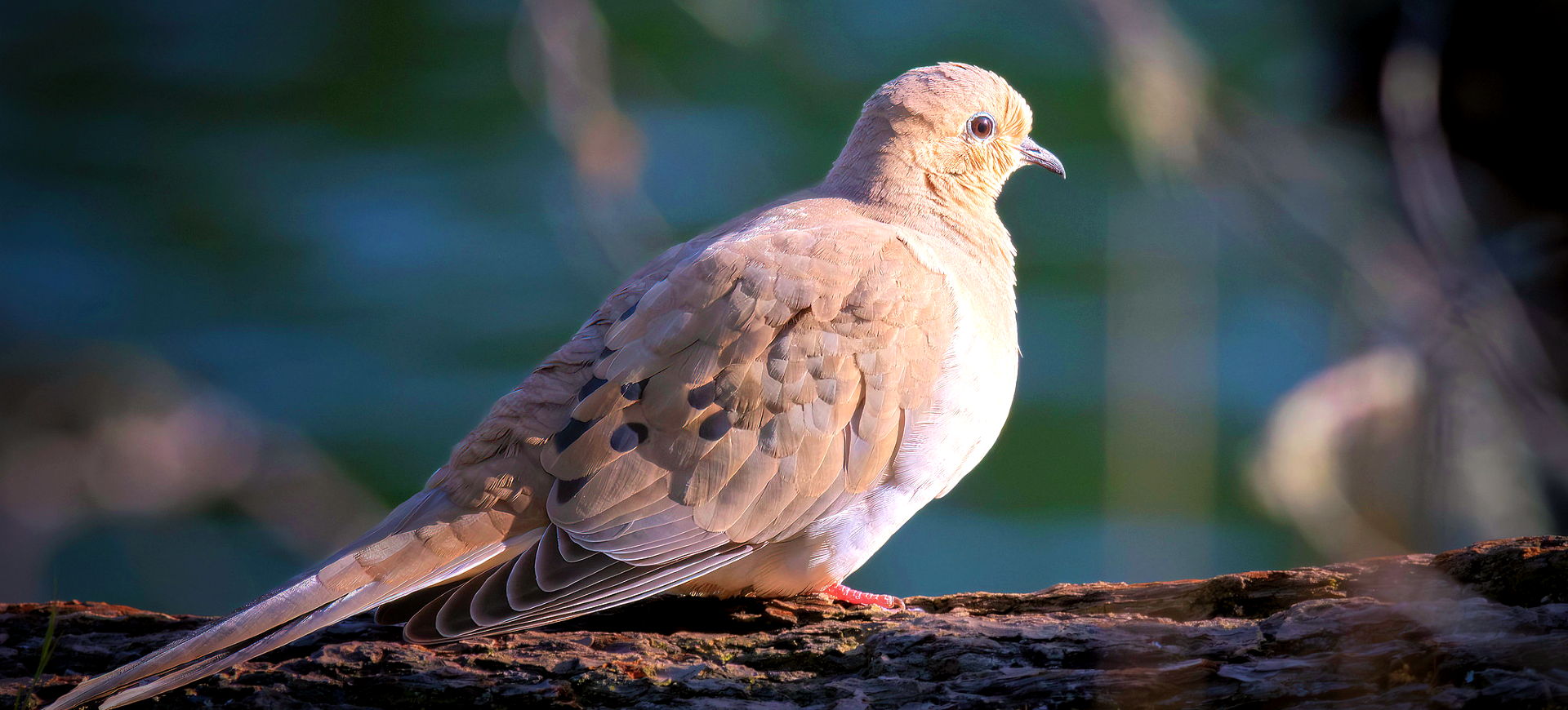Overview
The Pied Imperial Pigeon (Ducula bicolor) is a large, striking bird species native to Southeast Asia and Oceania. Characterized by its contrasting black and white plumage, the bird is often found in coastal mangroves, islands, and wooded areas near the sea. It is a strong flier, capable of covering long distances in search of food, primarily fruits.
The species has a robust body with a wingspan reaching up to 45 cm. The white plumage on its head, neck, and underparts contrasts sharply with the dark feathers on its wings and tail. The Pied Imperial Pigeon has a distinctive cooing call, often heard during the early morning and late afternoon, serving as a form of communication among individuals.
Socially, the Pied Imperial Pigeon is known to form large flocks, especially during feeding and roosting. These flocks can sometimes number in the hundreds. The species plays a crucial role in seed dispersal, contributing to the health and diversity of its native ecosystems. It is also known for its migratory behavior, with some populations traveling significant distances between their breeding and feeding grounds.
Taxonomy
Kingdom
Phylum
Class
Order
Family
Genus
Species
Type
Physical Description:
The Pied Imperial Pigeon is a large bird with a robust body and wingspan reaching up to 45 cm. Its plumage is white, covering the head, neck, and underparts. The wings and tail feature dark feathers, strikingly contrasting the white plumage. The bird’s beak is short and stout, adapted for consuming fruits, its primary food source.
The species has red eyes, which stand out against its white face. The legs and feet are also red, adding to its distinctive appearance. The Pied Imperial Pigeon is a strong flier, capable of covering long distances in search of food. Its strong wings and streamlined body enable it to fly at high speeds, making it one of the faster pigeon species.

Lifespan: Wild: ~10 years || Captivity: ~20 years

Weight: Male: 14-17 oz (400-480g) || Female: 13-16 oz (370-450g)

Length: Male & Female: 16-18 in (40-45 cm)

Wingspan: Male & Female: 17-18 in (43-45 cm)

Top Speed: 40 mph (64 km/h)
Characteristic:
Native Habitat:
The Pied Imperial Pigeon is native to Southeast Asia and Oceania, inhabiting coastal mangroves, islands, and wooded areas near the sea. It prefers regions with abundant fruit-bearing trees, which provide its primary food source. The species is highly adaptable and can also be found in cultivated areas with fruit trees.
The bird is known for its migratory behavior, with some populations traveling significant distances between their breeding and feeding grounds. During the breeding season, it prefers secluded areas, often on offshore islands, where it can nest and raise its young away from predators.
Climate Zones:
Biogeographical Realms:
Continents:
Diet:
Diet & Feeding Habits:
The Pied Imperial Pigeon primarily feeds on fruits, especially those from fig trees and nutmeg trees. It is known to forage in large flocks, often covering significant distances for food. The bird consumes the fruit whole and later regurgitates the seeds, playing a crucial role in seed dispersal in its native habitats.
During the breeding season, the species may also consume insects and small invertebrates to meet its increased nutritional needs. The Pied Imperial Pigeon is known to drink freshwater and will often visit rivers and streams to quench its thirst. It is also observed to consume mineral-rich soil, possibly to aid in digestion.
Mating Behavior:
Mating Description:
The Pied Imperial Pigeon has a monogamous mating system, where pairs form strong bonds that last for the breeding season and sometimes beyond. During courtship, the male performs a variety of displays, including puffing up its feathers and cooing loudly to attract a mate. Once a pair is formed, they work together to build a nest, usually in the branches of tall trees.
The female typically lays one or two eggs, which both parents take turns incubating. The eggs hatch after about 20 days, and the chicks are born altricial, meaning they are helpless and require significant parental care. Both parents feed and protect the chicks, which fledge after about 30 days. After fledging, the young birds may still rely on their parents for food and protection for several weeks before becoming fully independent.
Reproduction Season:
Birth Type:
Pregnancy Duration:
Female Name:
Male Name:
Baby Name:
Social Structure Description:
The Pied Imperial Pigeon is a social bird that often forms large flocks, especially during feeding and roosting. These flocks can sometimes number in the hundreds, providing safety in numbers against predators. There is little evidence of a strict social hierarchy within these flocks, although pairs and family units may stay close together.
During the breeding season, the social structure becomes more focused on the family unit. Pairs form strong bonds and work together to raise their young. Once the breeding season is over, the birds often rejoin larger flocks, where they engage in communal roosting and feeding, which helps them locate food resources more efficiently.
Groups:
Conservation Status:
Population Trend:
The Pied Imperial Pigeon is widely distributed across its native range in Southeast Asia and Oceania. It is generally considered to be of least concern, according to the IUCN Red List, due to its large population and broad distribution. However, the species does face localized threats, including habitat loss and hunting, which have led to population declines in some areas.
Conservation efforts are focused on habitat preservation and sustainable hunting practices. Protected areas have been established to safeguard crucial breeding and feeding grounds. Community-based conservation initiatives are also in place to educate local communities about the ecological importance of the species and the need for its protection.
Population Threats:
The primary threats facing the Pied Imperial Pigeon include habitat loss due to deforestation and land conversion for agriculture. In some regions, the species is also hunted for meat and the pet trade, which can significantly impact local populations. Additionally, the bird faces competition for food resources in areas where non-native species have been introduced.
Climate change poses a long-term threat to the species by altering its natural habitats and affecting food availability. Rising sea levels could also impact the coastal and island habitats that the species rely on for breeding and feeding—conservation efforts aim to mitigate these threats through habitat preservation and sustainable management practices.
Conservation Efforts:
Conservation efforts for the Pied Imperial Pigeon primarily involve habitat preservation and establishing protected areas. These efforts aim to safeguard crucial breeding and feeding grounds, ensuring the species’ long-term survival. Community-based conservation initiatives are also in place to educate local communities about the ecological importance of the species.
Legal protections have been implemented in some countries to regulate hunting and trade, helping to reduce the impact of these activities on local populations. Research is ongoing to better understand the species’ ecology and behavior, which will inform future conservation strategies. International cooperation is also crucial for the effective conservation of this transboundary species.
Additional Resources:
Fun Facts
- The Pied Imperial Pigeon is a larger pigeon species with a wingspan reaching up to 45 cm.
- The species plays a crucial role in seed dispersal, contributing to the health and diversity of its native ecosystems.
- It is a strong flier, capable of covering long distances for food.
- The bird has a distinctive cooing call, which serves as a form of communication among individuals.
- The species has red eyes and legs standing against its white plumage.
- During the breeding season, the species may consume insects and small invertebrates to meet its increased nutritional needs.
- The Pied Imperial Pigeon is known to drink freshwater and will often visit rivers and streams to quench its thirst.
- It is also observed to consume mineral-rich soil, possibly to aid in digestion.
- The species has a monogamous mating system, where pairs form strong bonds that last for the breeding season and sometimes beyond.
- The Pied Imperial Pigeon is not considered endangered, although it faces threats from habitat loss and hunting in some regions.




